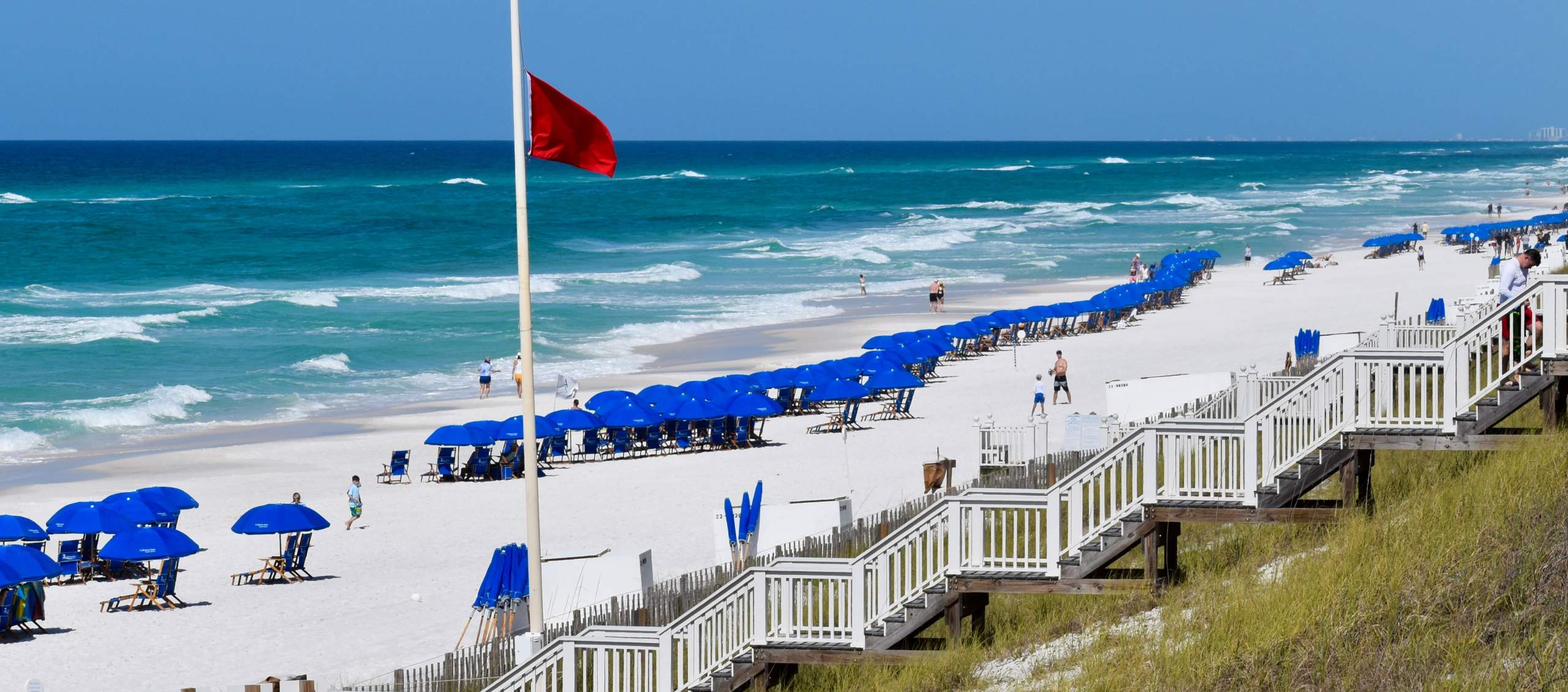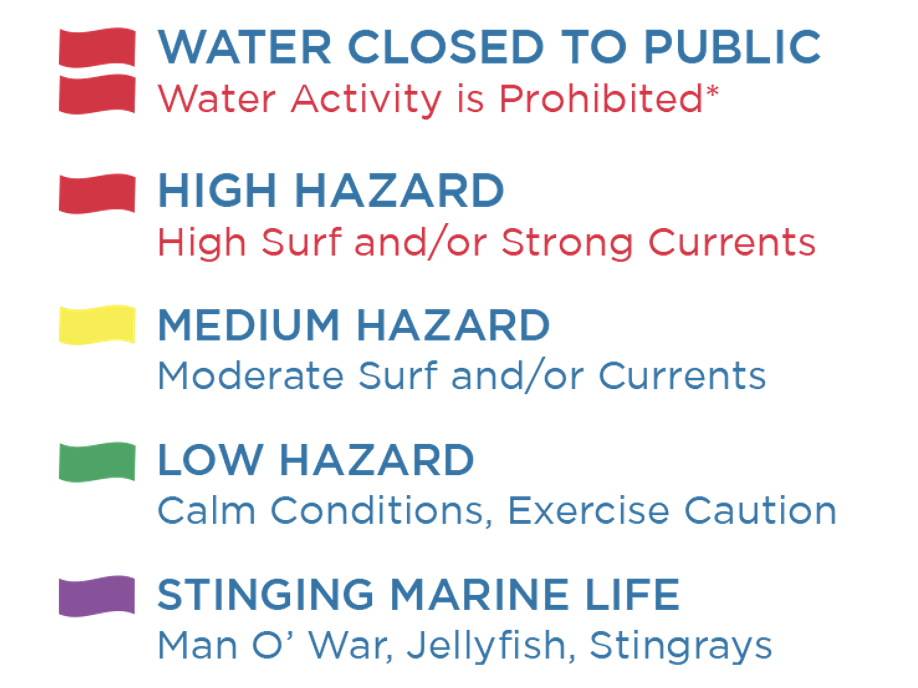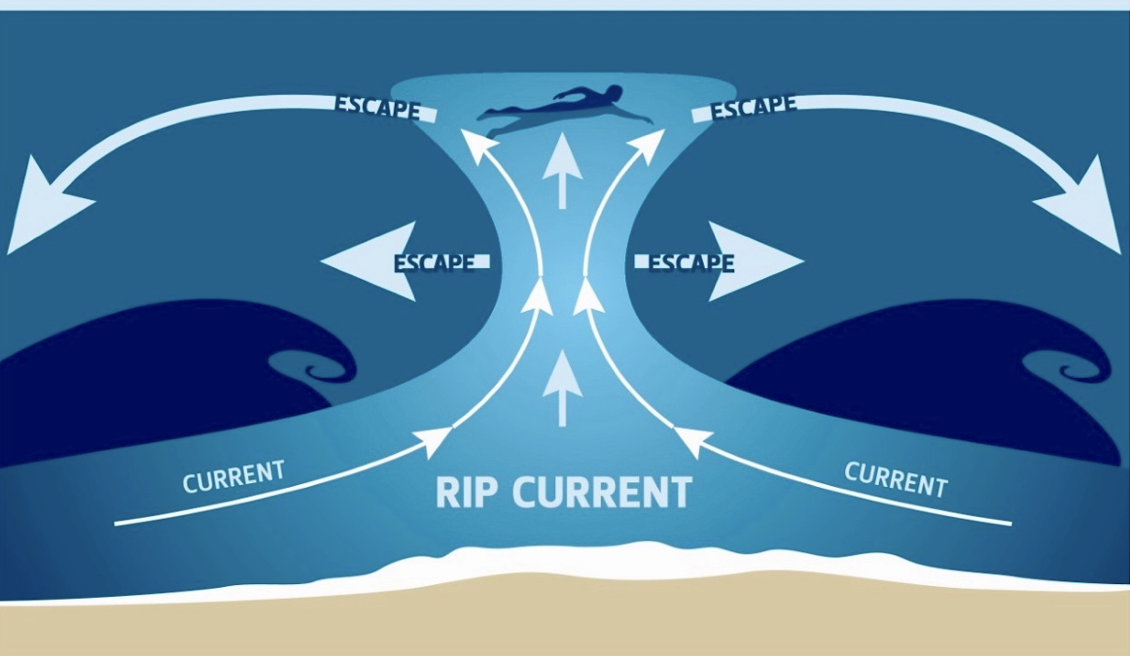Everyone on the beach should be familiar with the general guidelines of water safety in the Gulf of Mexico, from swimming and sailing conditions to marine life encounters. Currents can be stronger than anticipated, jelly fish can be present, bait fish, other marine life and sharks can be present in the water as well.
Water Safety Flags
It's always a good idea to know the basic warning signs and updates on local conditions - know your flag colors, as lifeguards and local officials keep us all informed on a daily and hourly basis.
Here in Seaside, you can check in with the local beach safety website for Gulf conditions or simply text "SAFETY" to 31279, to know before you head to the beach.
Courtesy of South Walton, here's an easy reminder:
We find that many visitors to Seaside are not familiar with these flags, and some have never swum in the gulf before - it's different from a pool or lake.
Swimmers need to be aware of tidal currents, riptides and other potential conditions that may make swimming difficult. Some people on the water may not intend to swim - paddleboarders and sailors - but if you're ON the water, it's wise to know how to be IN the water: the practices of floating and using a life vest may be something to brush up on.
Rip Tide Safety Tips
Rip currents are narrow channels of fast-moving water that can be found along the East, Gulf, and West Coasts of the U.S. You can spot a rip current by looking for darker color surf that indicates deepening water. Over a sandbar you may see smaller unorganized weaves alongside even breaking waves. You’ll also see waves breaking further out to sea on both sides of a rip current. (picture below)
If you’re caught in a rip current, remain calm. This current does not pull you under but only further away from shore. This current will eventually dissipate and release you. Try and remain relaxed and float, if possible, yell and wave to attract attention of people on shore. Continue to float or swim parallel to the shore until you are free from the current. Once free swim at an angle towards shore allowing waves to help push you forward.
Jellyfish, Sharks, and Stingrays
As with most vacation places in America, humans tend to share the surrounding environment with the local wildlife, and our playground is their habitat. The Gulf is no exception, and at Seaside, the local marine life includes jellyfish, sharks, and stingrays.
The general rule, as with any local wildlife, is to stay away from them, not attract them or disturb their natural lifestyle and certainly don't feed them. Here are some local basic safety tips for enjoying Gulf of Mexico while on vacation.
Swim in Groups: Sharks are less likely to approach groups of people.
Avoid Dawn and Dusk: These are peak feeding times for sharks, avoid the water at these times.
Avoid Night Swimming: Many marine life feed at night and it’s not safe.
Stay Clear of Fishing Areas: Avoid swimming where bait is present in the water.
Avoid Jewelry in the Ocean: Avoid wearing jewelry in the ocean which may glitter like fish scales to other creatures.
In general, there is always better safety in numbers, whether from marine life or from getting into difficulties swimming. Stay close to your group or other swimmers, stay in the designated areas, and be aware of lifeguard advisories.



